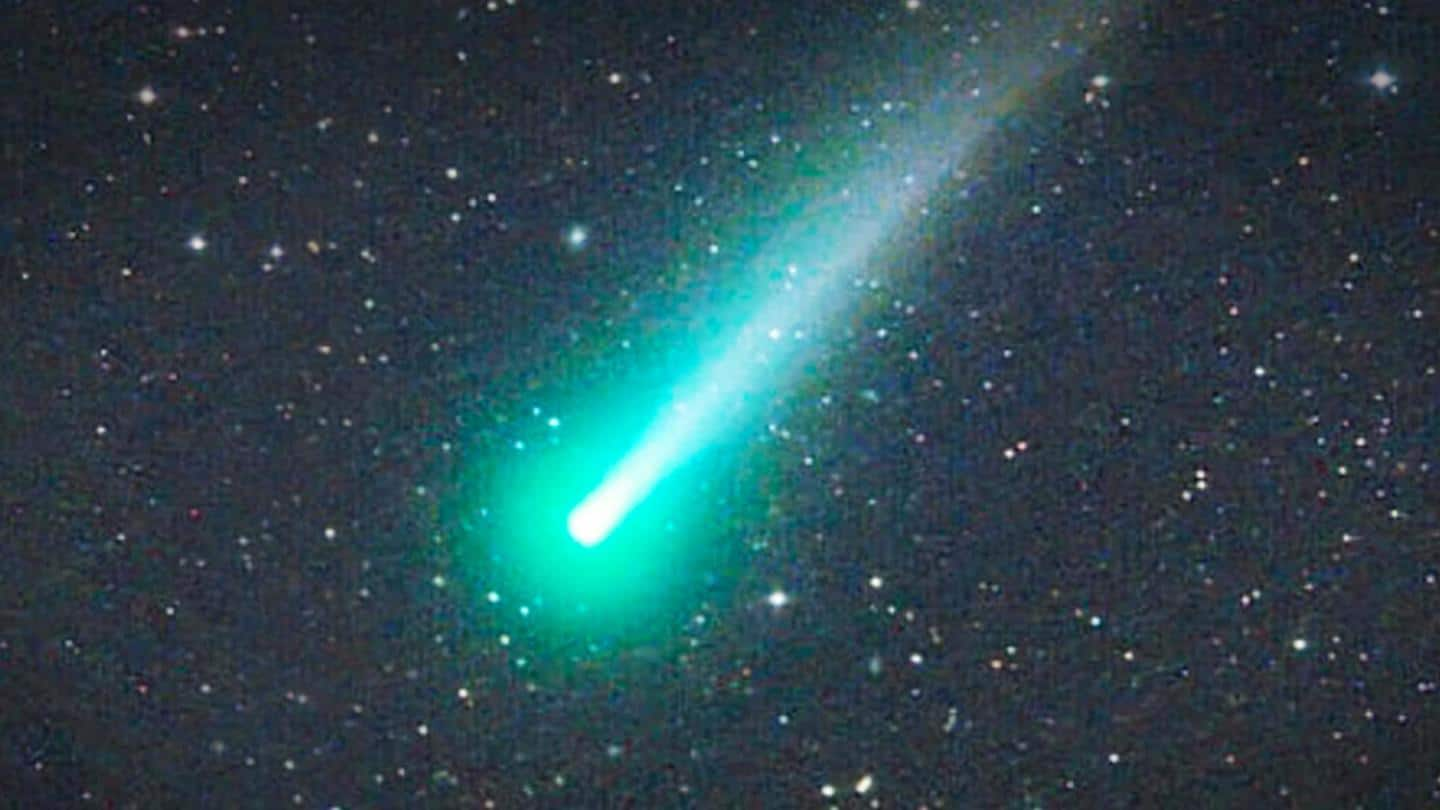
Comet Leonard is here, and never coming back again
What's the story
Comet Leonard, also known as the once-in-a-lifetime comet, is one of the brightest comets of the year. It has been named after astronomer Gregory J Leonard who discovered it in January 2021. Blanketed in a greenish glow, it was closest to the Earth on December 12. However, it will be visible throughout the month of December and is a treat to watch.
Context
Why does it matter?
Comet Leonard, officially named the C/2021 A1, has approached the Earth after 35,000 years. Astronomers say that this time after crossing the Sun, it will be propelled out of the solar system. As a result, it will never return to the solar system again, so no one after us will have the privilege to see it ever.
Comets
What are comets?
On December 12, it was closest to the Earth and passed it at a range of 21 million miles. Comets are frozen leftovers from when the solar system was formed. They are leftovers of rock, dust, and ice that orbit the Sun. When they approach the Sun, comets form glowing, bright heads and tails of gas and dust larger than most planets.
Details
Leonard is bound for interstellar space next year
The comet is coming from a mind-boggling distance of 5,53,51,21,21,590 kilometers. Its farthest approach point from the sun stands at 3,700 Astronomical Units (AU), 3,700 times the distance between the Earth and the Sun. The comet's orbital period around the sun is 80,000 years. However, this time Leonard will be propelled into interstellar space after passing the Sun on January 3, 2022.
Appearance
When to watch Comet Leonard?
Since its approach, Comet Leonard was at its brightest and highest point before sunrise. However, after sunset on December 14, it will be at its brightest in the evening sky and would be best visible after dusk. Even though it was closest to the Earth on December 12, experts say that it will be best viewed from Earth on December 17.
Visibility
Do you need a telescope to watch Comet Leonard?
As far as visibility from Earth is concerned, Comet Leonard is unpredictable. Experts believe that stargazers can watch it with the naked eye because of the comet's brightness. But, it is suggested to use a telescope or binoculars just to be safe. The National Aeronautics and Space Administration (NASA) has claimed that the comet's brightness has decreased since it started approaching the Earth.